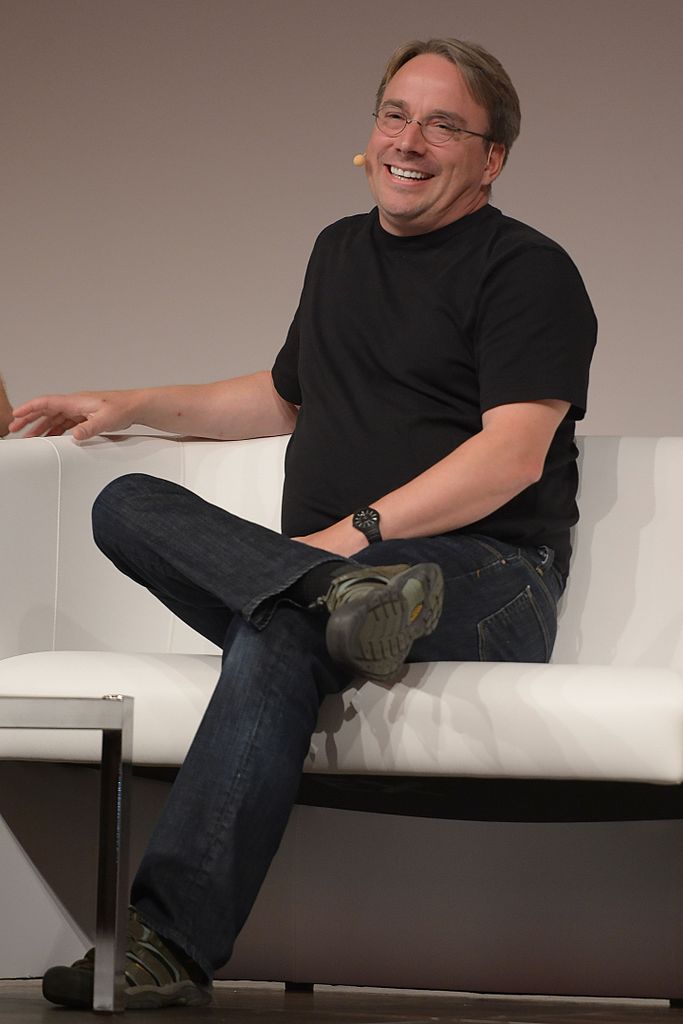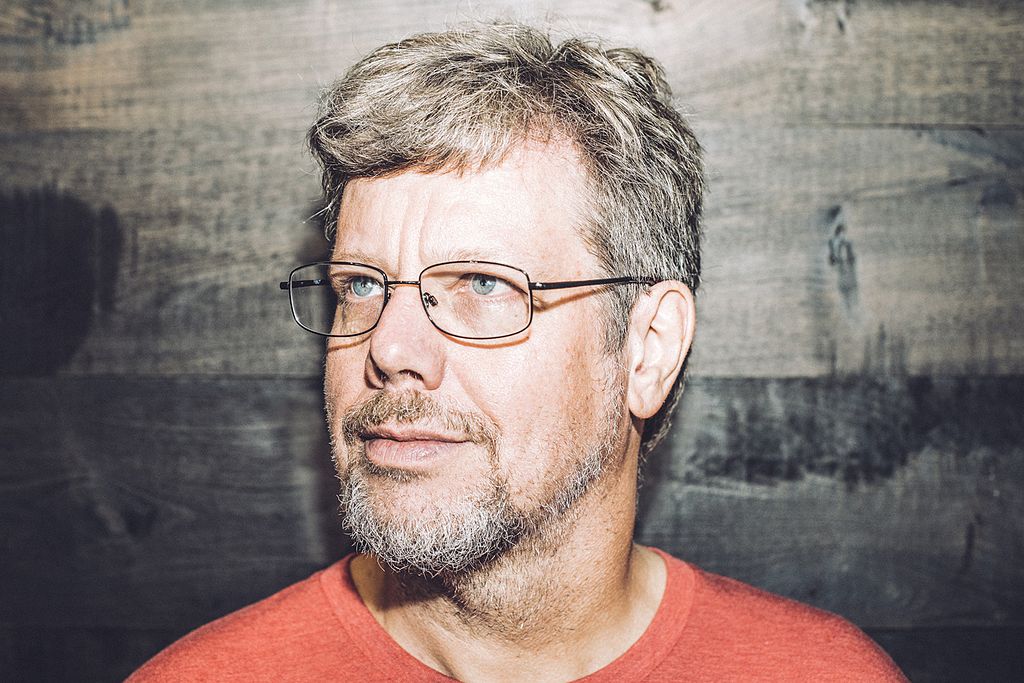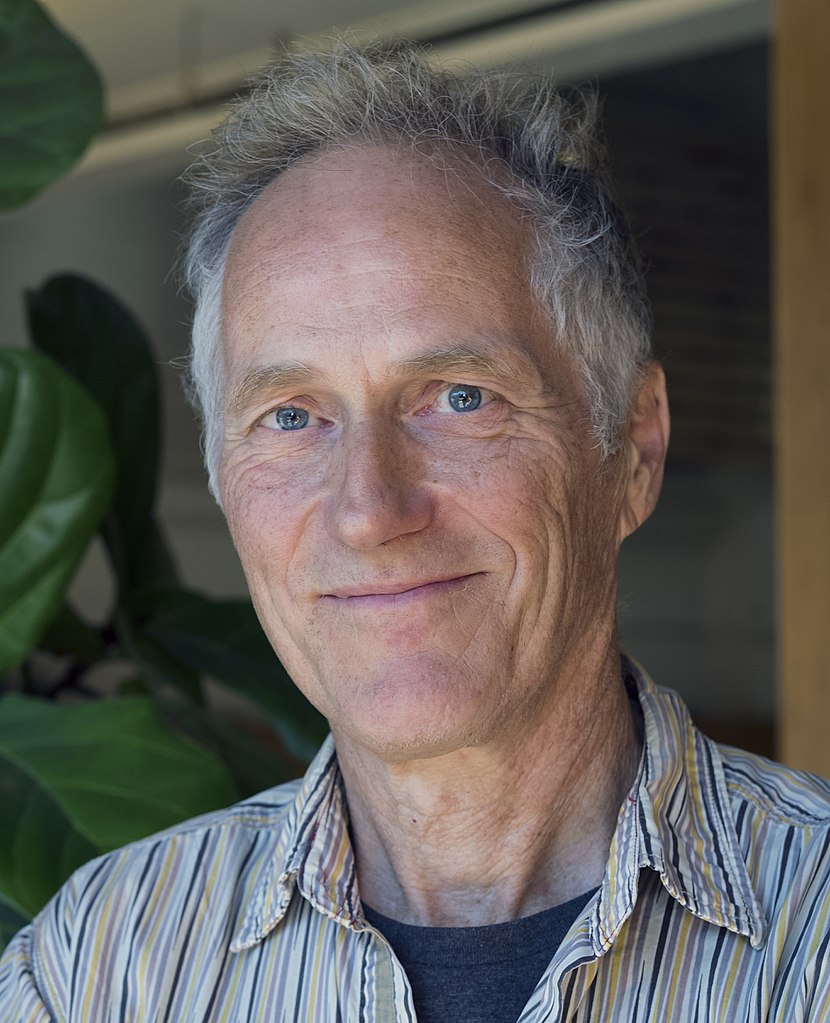Who is who in open source - part 2: geek biographies
We continue to talk about the people who influenced the development of open source.

/ photo Sebastiaan ter Burg CC BY-SA
Richard Stallman
Richard Matthew Stallman was born in 1953 in the family of a teacher and seller of printing presses. From an early age he was fond of computers. Stallman read computer programming books and technical documentation.
In high school, he was invited to an internship at the IBM research center , where he first began programming. In 1970, Stallman entered the physics department at Harvard University. Communication with his peers was hard for him, so he devoted all his free time to study and work. In his first year, Richard began working as a laboratory assistant at the Massachusetts Institute of Technology (MIT).
It was the work at MIT that had the greatest influence on Stallman’s approach to writing programs. The atmosphere of academic cooperation reigned in the laboratory - people freely exchanged code and helped each other with projects. But by the end of the 1970s, the situation began to change - open source programs began to replace proprietary software.
')
Stallman did not like the fact that the university was no longer a place for an open exchange of ideas and software tools. Therefore, he left MIT and began promoting open source software.
Before himself, Richard set two goals - to create a free operating system and a legal basis for its distribution. And in 1983, the GNU project (GNU's Not Unix) was born, designed to be an open and improved copy of Unix (which was proprietary at the time). It also developed an open license GPL. She secured the right to free use of software products, modify them and sell.

/ photo Anders Brenna CC BY
In 1985, Richard founded the Free Software Foundation, under the auspices of which GNU GCC (compiler C), GNU GDB (debugger) and GNU Emacs (cult text editor) were released. These tools and the GPL license later served as the basis for the Linux operating system.
After the spread of Linux, Stallman began to speak frequently at IT conferences. He travels the world lecturing on ethics and intellectual property. At the same time, Richard Stallman continues to serve as president of the Free Software Foundation to this day.
Linus torvalds
Linus Benedict Torvalds was born on December 28, 1969 in a Finnish family of Swedish descent. As a child, Linus became interested in microcomputers and began programming: first in BASIC, and then in computer code.
The largest project of his youth was a modification of the operating system Sinclair QL, for which he wrote the assembler and text editor himself. Not surprisingly, Linus without any problems entered the main university of the country - the University of Helsinki.
/ photo Krd CC BY-SA
 It was there that in the late 80s he became acquainted with a Unix-like operating system called Minix. Linus liked its portability and lightness, but did not like the license terms. In 1991, he decided to create his own free Minix alternative for 32-bit Intel processors. For these purposes, he used the tools of the GNU project founded by Stallman.
It was there that in the late 80s he became acquainted with a Unix-like operating system called Minix. Linus liked its portability and lightness, but did not like the license terms. In 1991, he decided to create his own free Minix alternative for 32-bit Intel processors. For these purposes, he used the tools of the GNU project founded by Stallman.What began as a hobby soon turned into one of the most popular operating systems and an international phenomenon - Linux.
After some time, a massive community formed around the OS that needed to be managed. Therefore, Linus was forced to take a leadership role and move away from the development as such. As of 2006, only two percent of the source code for the Linux kernel was written personally by Torvalds. But in addition to the kernel code, Linus also developed the Git version control system, which remains popular today.
As a leader, Linus is known for his directness, sometimes reaching for rudeness. Last year he had to apologize for his behavior. Torvalds even temporarily left the post of coordinator of the Linux-project. But he soon returned to his duties and plans to further develop the open source ecosystem.
Guido Van Rossum
Guido Van Rossum was born in 1956 in Haarlem - the capital of North Holland. At the age of ten years, the young Guido was presented with a designer from electronic components. Having exhausted the book with examples, he began to collect his own schemes. This experience instilled in him a love of electronics. In high school, Rossum intensively studied physics and wanted to design electronic devices.
Programming, unlike Torvalds and Stallman, Guido began to study much later. In the 70s, he entered the University of Amsterdam at the Faculty of Mathematics. The main building was located in the building of the university, the possibilities of which struck Guido. He began to study Algol, Fortran and Pascal, and later he transferred to the computer science department altogether.
While still a student, Rossum began working as a programmer. Under the leadership of Andrew Tanenbaum , the creator of Minix, he was involved in the development of the Amoeba operating system, and later on the interpreted, object-oriented language ABC . By all standards, this language was ahead of its time, but the hopes that had been placed on it were not justified. The product failed and after three years its development was abandoned.
During the Christmas holidays of 1989, Rossum began to independently develop a new programming language that included the best ideas of the “dead” ABC. The project was named Python - in honor of the comedy group Monty Python, which he loved so much.
In the 90s, Python overtook not only its predecessors in popularity, but also many modern languages. An active community formed around him, and Guido was baptized by the project’s “Magnanimous Life Dictator”.

/ photo Daniel Stroud CC BY-SA
Rossum later moved to the United States. There he worked at Google and popularized programming among children. In 2008, Guido began to help the young Dropbox team and is still working in it.
As for Python, its popularity is only growing. Today, millions of people begin their journey in the world of programming with it.
Tim O'Reilly
To use open-source technologies, it is necessary that someone wrote about them. And Tim O'Reilly literally "formed" the language we speak about open-source.
/ photo by Christopher Michel CC BY
 Tim O'Reilly was born in 1954 in the south-east of Ireland. Even as a child, he moved to San Francisco. Unlike other people mentioned in the article, Tim received a humanitarian education, and graduated from Harvard with a diploma in ancient literature.
Tim O'Reilly was born in 1954 in the south-east of Ireland. Even as a child, he moved to San Francisco. Unlike other people mentioned in the article, Tim received a humanitarian education, and graduated from Harvard with a diploma in ancient literature.Shortly after graduation, O'Reilly married and also received a grant to translate Greek fables. But you can't feed with seven academic grants - O'Reilly started looking for a way to build a career. A friend, an engineer named Peter Brier, offered Tim a job to write technical documentation for his company's products. Despite the fact that O'Reilly had never seen computers in his life, he agreed. So, began his journey into the world of IT.
By the mid-80s, Tim had accumulated enough knowledge to start his company. During this time, he developed his own technical language - simple and accessible even to such humanities as himself. Initially, his organization was engaged in the production of documentation to order, but later turned into a whole publishing empire - O'Reilly.
The first "breakthrough" of O'Reilly was the book " The Whole Internet User's Guide and Catalog ". It was published in 1992, at the dawn of the Internet - and for a long time remained one of the most authoritative resources on the topic. Each year, the company sold 250 thousand copies of this book.
When, in the mid-90s, Cisco was approached by Tim with an offer to buy the company, he refused, confident that he could develop the business on his own. And so it happened - now his publishing house earns more than 50 million dollars a year.
In addition to publishing, Tim was actively involved in the life of Silicon Valley. For his ability to predict trends, he was called the "oracle." In 1998, he was the one who popularized the term open source software, and in zero published a paper about Web 2.0. For the past ten years, he has remained one of the most prominent figures in the culture of makers .
What we write about in Telegram:
- Why vGPU are not inferior in performance to iron solutions
- IaaS for comfortable business scaling - Redweb case
- Future data center: three technologies for 5G network sweep
- IaaS for comfortable business scaling - Avito.ru case
- 5 cloud management tools
- Why companies use virtual machines, not containers
- Who supports cloud projects - talk about four open source funds
Source: https://habr.com/ru/post/449748/
All Articles